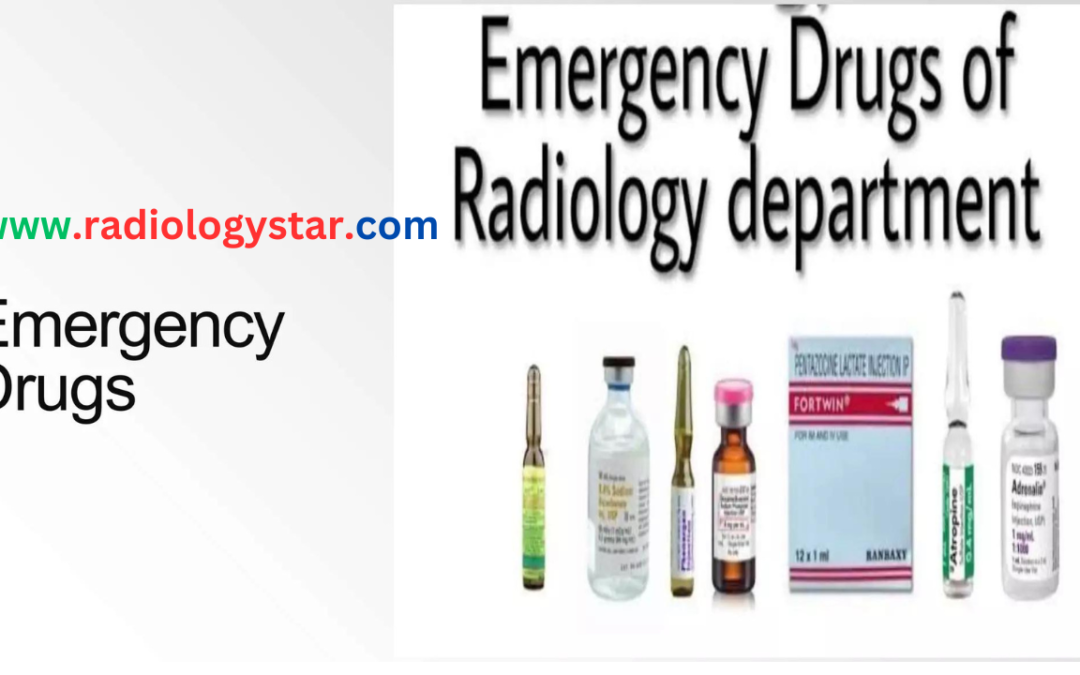What Is Emergency Drugs In Radiology Department?
Emergency drugs in radiology department refer to medications that are commonly used in radiology departments to manage acute medical situations or emergencies that may arise during imaging procedures. These drugs are typically administered to ensure patient safety, stabilize vital signs, and address any adverse reactions or complications that may occur during or after radiological examinations. The specific choice and use of emergency drugs may vary depending on the institution, the type of imaging procedure being performed, and the patient’s clinical condition.
Some examples of emergency drugs commonly used in radiology department:-
1) Inj. Avil.
– Severe allergic reaction.
– Swelling and itching.
2) Inj. Dextrose
– Hypoglycemia
– insulin shock
– Dehydration
3) Inj. Phenergan (Promethazines)
– Sedative
– Runny nose
– Sneezing
– Watery eyes
– Itching skin rush.
4) Inj. Sodium by carbonate.
– Metabolic Acidosis.
– Hyperkalemia.
– Cardiac Arrest.
5) Inj. Corts ( Hydrocortisone)
– Asthma
– Internal Disorder
– Skin disorder
– Blood disorder
– Thyroid disorder
6) Inj. Dexasone
– Severe allergic reaction
– Arthritis
– Breathing problem
7) Inj. Atropine.
– Bradycardia.
– Antidote for organophosphates poisoning.
8) Inj. Vasocone ( Adrenaline).
– Cardiac arrest.
– Anaphylactic shock.
– Superficial bleeding.
9) in. Eptoin ( Phenytoin)
– Seizure control.
10) Antiseptic solution.
– Used to clean the skin before procedure.
11) Inj. Diazepam( Benzodiazepine).
– Sedation and anxiety.
12) Buscopan.
– Control the bowel motion.
13) Inj. Dopamine.
– Low blood pressure
– Slow heart rate
– Cardiac arrest
14) Inj. Adenosine
– Superaventricular Trachycardia.
15) Inj. Vasopressin.
– Low blood pressure
16) Inj. Nitroglycerin.
– Hypertension
– Chest pain.
17) Inj. Digoxin.
– Heart failure
– irregular heart beat
18) Inj. Dexamethasone.
– Severe allergic reaction
– COPD
19) Inj. Heparin.
– Treat and prevent blood clots.
20) Inj. Lidocaine.
– Local anesthetic
– Antiarrhythmic.
21) Xylocaine Gel.
– Used to lubricate and pain relief.
22) Normal water.
– Used to clean syringe or catheter.
BOOK LINK :- Textbook of Radiology for X-ray, CT, MRI, BSc, BRIT and MSc Technicians

